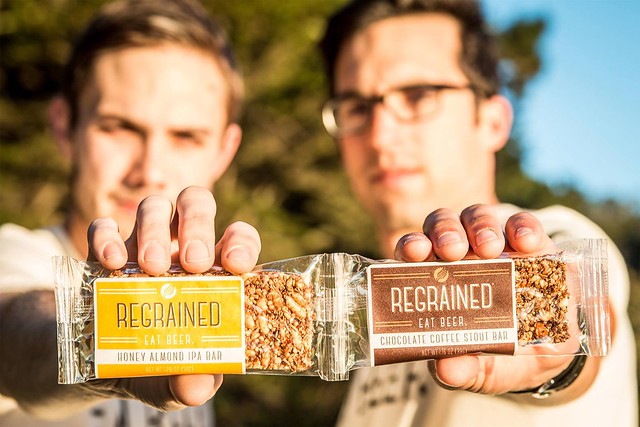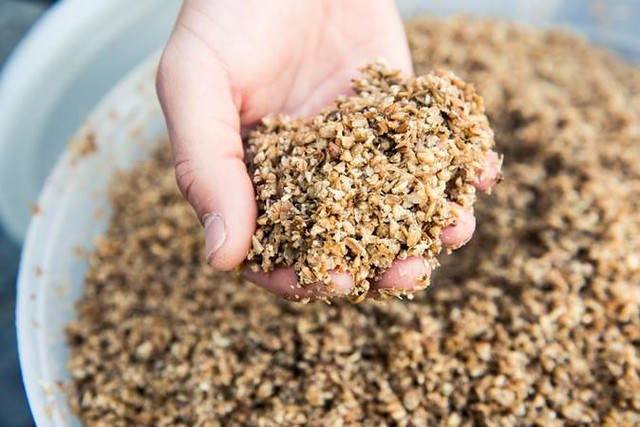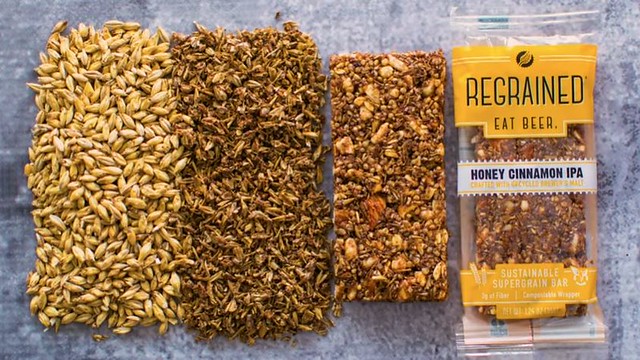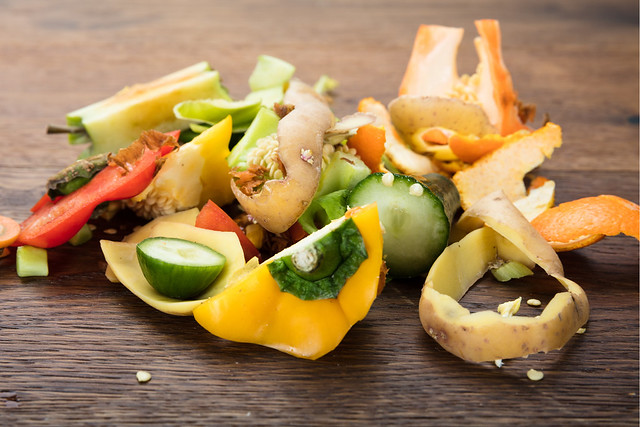Upcycling with ReGrained
ReGrained founders Daniel Kurzrock and Jordan Schwartz met as undergrad students at UCLA. Like most college students on a budget, they were looking to save money so they learned how to brew their own beer. They quickly discovered that each batch of beer also produced a grain that looked and smelled like oatmeal. In the beginning, they threw all of it away, as most brewers do.
Then they learned that it can be used to make bread, so they began baking and selling bread to students on campus, purely with the goal of earning enough money to cover their brewing expenses. After some research, they determined that beer grain has significant nutritional value. The brewing process separates the sugar from the grain, but it leaves behind protein, fiber, and a number of micronutrients. They wondered, why limit this to just bread? The first ReGrained granola bar was made in 2013.
Over the years, these delicious snack bars have evolved in flavor, but they still are made with the nutrient-dense beer grain byproduct. This grain is known as “spent” grain because it has already served its purpose to the brewer. Some breweries partner with local farms that can feed the grain to their farm animals. In some cities, brewers can pay the city to haul away the grain and compost it. However, in the majority of cases, the grain is simply disposed of.
ReGrained currently sources from six different San Francisco breweries. They collect the “spent” grain and upcycle it into their patented SuperGrain+ flour, which they use to make their snack bars. They currently have three different flavors, all of which can be purchased in our online farm stand. They are continuously experimenting with the best uses for beer grain, and hope to one day expand their product offerings to tortillas and bread.
Throughout their journey, the ReGrained founders have become increasingly passionate about reducing food waste in America. Over one-third of the food we produce in the world is wasted, and that statistic doesn’t even take edible byproducts such as beer grain into consideration. A six-pack of beer creates about a pound of grain. If we took a year’s worth of grain from the six billion gallons of beer produced in the past year and made bread out of it, there would be enough for every American to have 34 loaves of bread.
Here at Farm Fresh To You, we love the concept of upcycling. If you’re not familiar with the idea, it simply means finding creative uses for byproducts or materials that typically go to waste. One way that we love to upcycle is by trying to reduce food scraps and using every part of the produce that we receive in our farm box: peels, stems and all! Earlier this year, we shared some tips on the blog about reducing food waste at home and cooking with scraps. However, our wonderful farm box members had some really great practices and ideas to share with us! We want to spread the inspiration by sharing some of the many ways that our farm box members are dedicated to upcycling their food waste.
“I like to collect vegetable scraps through the week in a container in the fridge. I then use these as toppings for pizza. I also throw leftover scraps into egg whites to make omelets.” - Shannon
“I am about as obsessed with avoiding food waste as you can be! I use a lot of things that I don’t consider to be scraps, like broccoli stems (which are my favorite part) and all the leaves and stems of cauliflower. So many of the parts that get tossed are loaded with nutrients. I never peel anything. I’ve made watermelon rind kimchi and I eat the core of pineapple.” - Susan
“I try to think of natural alternatives to single-use plastic packaging. Instead of using plastic wrap or plastic baggies, I wrap the fruit and veggies that I pack in my family’s lunches with the big outermost leaves of romaine or cabbage - which I normally discard anyhow.” - Miranda
“I freeze any citrus zest or rinds to use throughout the year. I also save apple peels and make apple chips with them by adding a little butter and cinnamon and baking them in the oven. I make ice cubes out of ripe fruit or any herbs, You can add the cubes to cocktails, tea or lemonade to add a ‘kick’.” - Jeri
“Leftover veggie scraps are great in green smoothies, sauteed in omelets or added to soups. Fruit pits, seeds and stems are fun for kids’ art projects.” - Linda
“Eggshells don’t really compost that well over time. I know they contain calcium that is good for soil, but the best use I’ve found is crumbling them up as finely as possible and spreading among my vegetable garden and other plants to deter slugs, snails, earwigs, tomato worms and caterpillars.” - Betty
“For every recipe that calls for removing kale leaves from the stems (and only using the leaves), I save the stems and add them, diced, to the next recipe I make that calls for a mirepoix. Diced kale stems play nicely with diced carrots, onion and celery.” - Kara
“I freeze avocado skins and pits for future dyeing of yarn. I also bag and deliver fruit and vegetable scraps to a friend for her backyard chickens.” - Carol
“We dry or dehydrate leftover herbs, fruits and veggies. We also juice and freeze citrus, and dehydrate the leftover citrus rinds for later use. They can be ground into powdered zests. We use powdered Meyer lemon zest to make our own lemon pepper. It can also be used in baked goods, to steep in tea, or to add flavors to soups, dips, oils, and butter!” - Heidi
“I juice a lot of carrots and make tasty energy balls out of the leftover pulp. I add pitted dates, pumpkin seeds, raisins and a small amount of fresh carrot juice then pulse the mixture in a food processor. I roll the sticky mixture into little balls then cover them in shredded coconut. Sometimes I’ll add mini chocolate chips or sunflower seeds for a different flavor.” - Judy
“I utilize my food scraps by turning them into delicious dog food or treats for my dogs. When I peel carrots or potatoes I put them in the food processor and then add them to pup pancakes or homemade puppy treats. I also throw egg shells and vegetables that are no longer fresh back into my herb garden and mix it into the soil. If I can’t cook it, then I use it to help me produce more food.” - Amy
How To Add Farm Stand Products to Your Delivery:
CSA members - head on over to our online Farm Stand Market to customize your upcoming delivery. Market is open from noon on Thursday until 6 pm, 2 days before your scheduled delivery day. After you confirm your produce items, click the orange button "Confirm and Continue To Other Farm Products" to add the products to your delivery.
Not part of our farm family? Find out if we deliver to your neighborhood. You can even get your whole office in on the fun with our office snack packs. Find more information about our office deliveries here.







